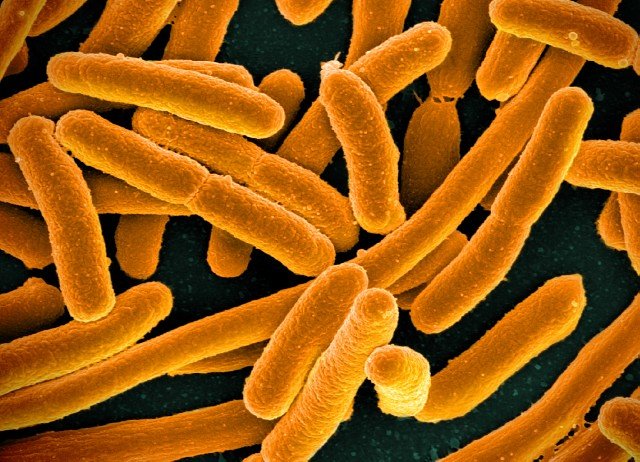Researchers have long understood that ultraviolet (UV) radiation from the sun can trigger complex responses in human skin, both protective and harmful. Now, a new study out of the University of Lyon suggests that the bacteria dwelling on our skin do more than just coexist—they actively help neutralize a UV-generated molecule linked to immune suppression and DNA damage. By breaking down cis-urocanic acid, a byproduct of UV exposure, certain skin microbes may provide an added line of defense against sun-induced harm.
The UV–Microbiome Connection
Ultraviolet B Radiation and Urocanic Acid
When UVB rays strike the skin, they convert a naturally occurring amino acid metabolite called trans-urocanic acid into its “cis” form. Cis-urocanic acid has been implicated in two key detrimental processes: it binds to serotonin receptors on immune cells, dampening local immune responses, and it participates in oxidative reactions that can damage DNA. Both pathways are thought to contribute to the development of skin cancers and to reduce the skin’s ability to ward off pathogens and other environmental insults.
Uncovering Microbial Metabolism of Urocanic Acid
Led by biotechnologist Vijay Kumar Patra, the research team screened common skin bacteria—both in culture and on the skin of UVB-exposed mice—for their ability to degrade cis-urocanic acid. Their findings, published this week in Frontiers in Microbial Dermatology, revealed that species such as Staphylococcus epidermidis possess an enzyme called urocanase, which converts cis-urocanic acid into non-immunosuppressive metabolites. This metabolic activity effectively removes the molecule before it can exert its harmful effects.
Key Experimentation and Results
In Vitro Bacterial Assays
Using purified cis-urocanic acid and cultured strains of S. epidermidis, the team added UVB-treated skin extract to bacterial suspensions. Over the course of hours, they observed a marked decrease in cis-urocanic acid concentration in the presence of live bacteria—an effect not seen with heat-killed controls. Genetic analysis confirmed upregulation of the urocanase gene in treated cultures.
Murine Skin Microbiome Studies
To validate the phenomenon in a living system, researchers exposed mice to controlled doses of UVB radiation and monitored skin levels of cis-urocanic acid over time. Mice with an intact skin microbiome showed a rapid post-exposure decline in the UV-generated molecule, whereas germ-free mice or those treated with broad-spectrum antibiotics retained elevated cis-urocanic acid levels for days. Colonizing germ-free mice with S. epidermidis restored the clearance effect, underscoring the bacterium’s pivotal role.
Implications for Sun Protection and Skin Health
A New Layer of UV Defense
“Our skin has evolved not just as a physical barrier, but as an ecosystem,” says Marc Vocanson, a skin immunologist at the International Center for Research in Infectiology. “This study reveals a direct metabolic interaction between host and microbiome that modulates UV effects and could help maintain immune vigilance after sun exposure.” By breaking down cis-urocanic acid, these microbes may reduce both local immunosuppression and oxidative stress—two contributors to photoaging and carcinogenesis.
Toward Microbiome-Aware Sunscreens
The discovery opens the door to next-generation sun-protection strategies. Peter Wolf, a photodermatologist at the Medical University of Graz, suggests that topical formulations might one day include live urocanase-producing bacteria or purified urocanase enzyme alongside traditional UV filters. “Such products could not only block UV radiation but also harness our resident microbes to neutralize harmful byproducts,” he explains. Early concepts envision dual-action creams that provide immediate physical and chemical UV protection while promoting a beneficial microbial metabolism.
Personalized Photoprotection and Phototherapy
Beyond prevention, understanding strain-specific urocanase activity could refine phototherapy treatments. Conditions such as psoriasis, eczema and vitiligo often benefit from controlled UV exposure, yet the immunomodulatory effects of cis-urocanic acid can interfere with therapeutic outcomes. By temporarily depleting urocanase-positive bacteria or inhibiting their activity prior to phototherapy, clinicians might enhance treatment efficacy. Conversely, fostering a healthy population of these bacteria between sessions could reduce photodamage and inflammation.
Future Directions and Research Needs
Translating Findings to Human Trials
While the initial studies relied on in vitro assays and mouse models, human clinical trials are the logical next step. Researchers plan to recruit volunteers for controlled sun-exposure studies, comparing cis-urocanic acid kinetics on treated versus untreated skin areas. Metagenomic analyses will track changes in microbial populations and correlate them with UV-induced biomarkers of inflammation and DNA damage.
Safety, Stability and Regulatory Considerations
Introducing live microbes or enzymes into skincare products raises questions of safety, shelf life and regulatory approval. Formulators must ensure that urocanase-based treatments do not disrupt the broader microbiome balance or inadvertently foster the growth of pathogenic strains. Rigorous safety assessments and standardized manufacturing protocols will be critical before commercial release.
Broadening the Microbial Palette
Although this study focused on S. epidermidis and a handful of commensals, diverse skin regions harbor unique microbial consortia. Future work will explore whether other bacteria—or even fungi—possess complementary UV-detoxifying pathways. A more comprehensive map of skin microbiome–host interactions could yield a catalog of beneficial microbes for targeted applications.
Expert Perspectives
“It’s a paradigm shift,” says Vocanson. “We’ve always viewed microbes on our skin as relatively passive residents or, at worst, opportunistic pathogens. Now we see them as active partners in maintaining cutaneous health, especially under environmental stress like UV exposure.” According to Patra, “These findings underscore the need for microbiome-friendly sun-care regimens that avoid broad-spectrum antimicrobials while supporting beneficial species.”
Conclusion
The notion that bacteria on our skin might shield us from sun damage adds a new dimension to dermatology and photoprotection. By metabolizing the harmful cis-urocanic acid generated by UVB rays, commensal microbes such as S. epidermidis help preserve immune function and minimize DNA damage in skin cells. As microbiome science continues to intersect with skincare innovation, consumers may soon see novel sunscreens and phototherapy protocols designed not only to block UV radiation but also to collaborate with our microscopic allies—offering a holistic approach to skin health in the sun.
